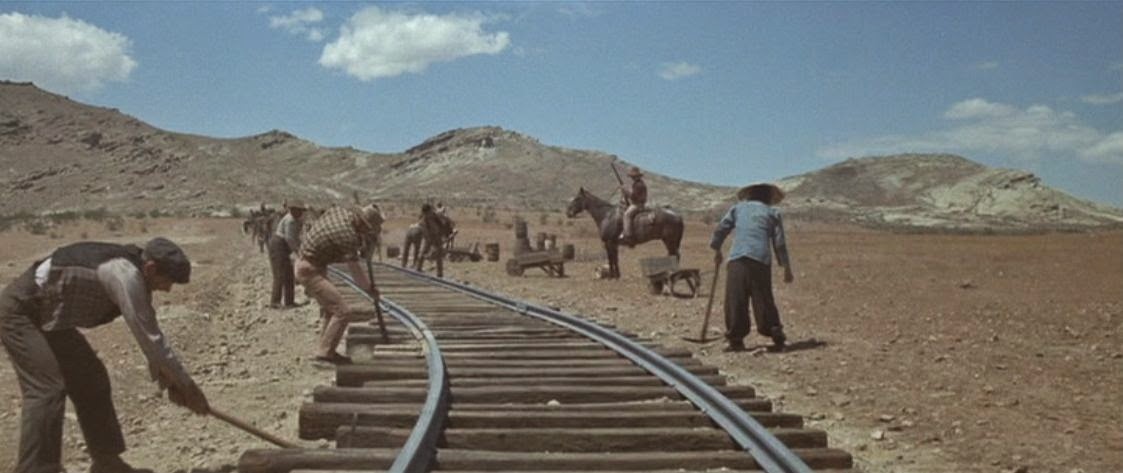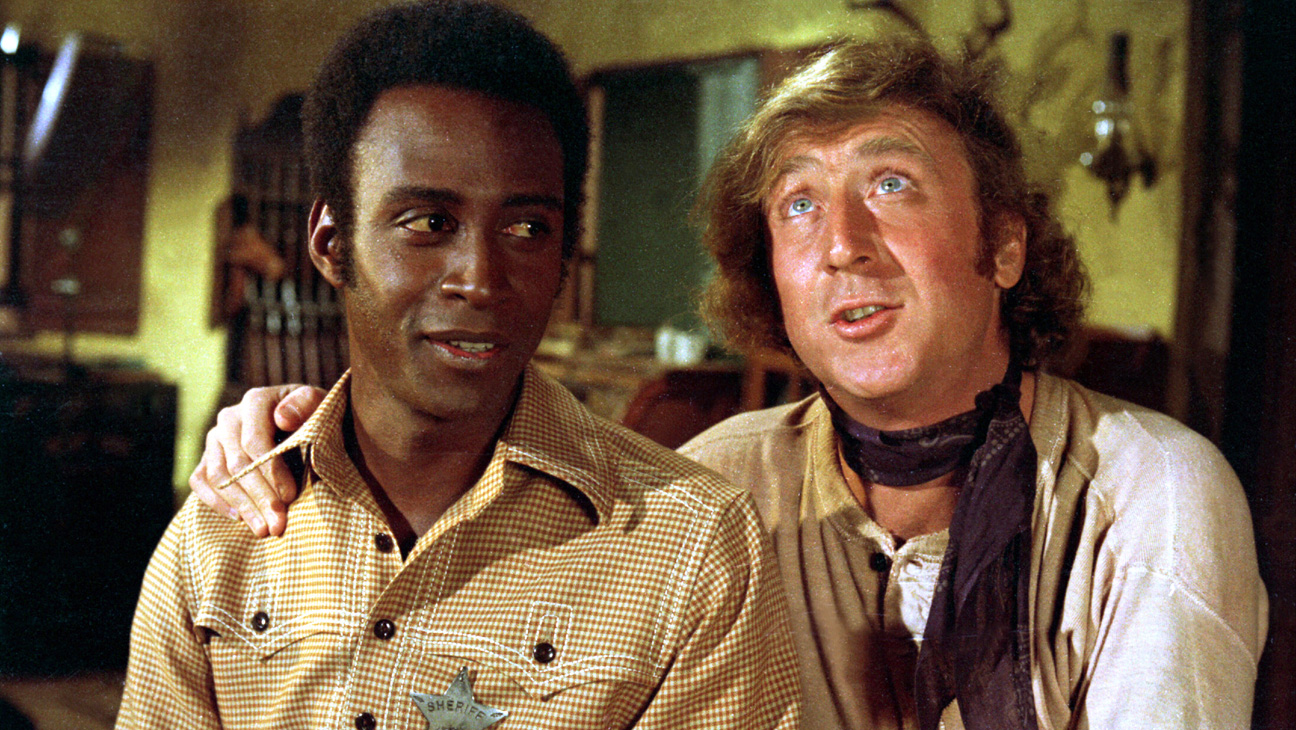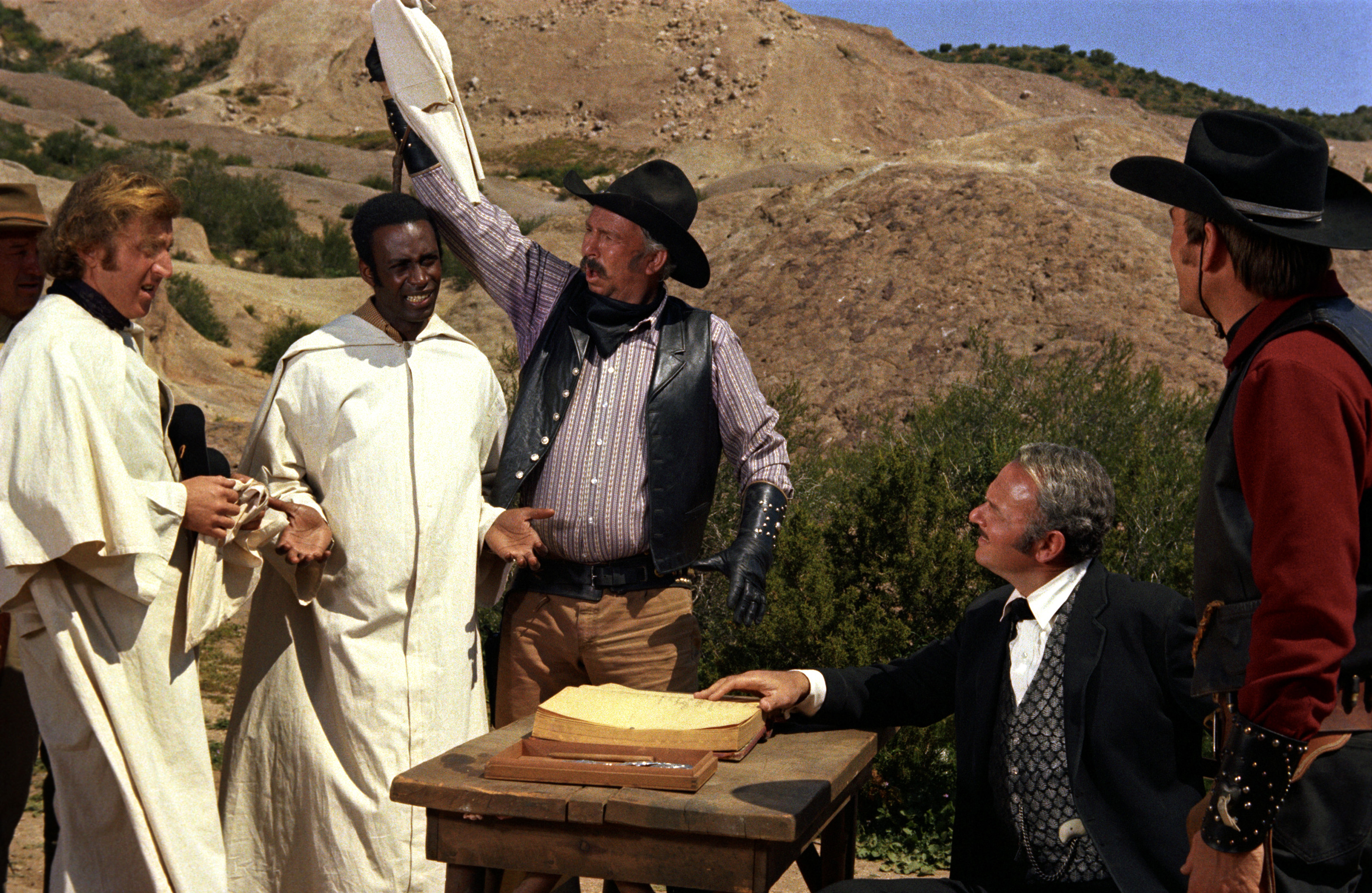Blazing Saddles: An Old Western About Living in America Today
Mel Brooks’ Blazing Saddles is as timely today as it was in 1974 because it is about America’s past, present, and future.
In September 2017, a filmmaker and statesman for Hollywood days gone by named Mel Brooks gave a grim prognosis for our culture: We’d never make Blazing Saddles today. While he thinks some of his masterpieces of yore like Young Frankenstein could still exist in a modern context, Blazing Saddles would simply ruffle too many feathers.
“Never Blazing Saddles,” Brooks told BBC Radio 4, “because we have become stupidly politically correct, which is the death of comedy.” This is of course an oversimplification of the changing attitudes in our society, yet it rings with an unshakable truth. “They,” being Hollywood studios and the plethora of talent who frequent said distributors, would not touch Blazing Saddles in 2019. Which is a doggone shame since Blazing Saddles is just as much about our current time and place as it is of the era that Brooks made it in.
Indeed, the irreverent and shamelessly crude spoof of Western clichés is a unique comedy in the annals of American laughers because it is not simply a product of its contemporary sense of humor; it’s still a universal commentary on American culture that mines a country’s cinematic and cultural past, deconstructs Mel Brooks’ then-present 1974, and foretells our 21st century future.
Ostensibly a vulgar dash of madcap hysteria that has the dubious honor of being the first Hollywood film in which characters fart onscreen, the true eternal quality of Blazing Saddles is its ability to capture the ongoing narrative of America’s original sin while breaking away for the occasional flatulence. As such it presciently mocks our current failings 45 years on, even if its vernacular is antiquated.

America’s Past
Blazing Saddles was not entirely Mel Brooks’ idea, at least so far as to make a Western spoof starring a person of color who becomes the new sheriff. The concept was hatched at Warner Bros. as a soft fish-out-of-water farce starring James Earl Jones and Alan Arkin. But as that original conceit fell through, a number of filmmakers attempted to talk their way into helming the project. By Brooks’ admission, “I was the loudest.”
During the production, Brooks saw its title change many times—a personal favorite would have been Tex X (in reference to Malcolm X). While the studio steered the film to less political waters in its marketing, the film dived headfirst into them in its script and then dared audiences to join in. In the context of farce and comedy, Brooks utilized the tropes and clichés of classic Westerns and American mythmaking to deconstruct the uncomfortable foundations such ideas were built on.
The original choice for the Waco Kid—the alcoholic and shaky-handed gunslinger played by Gene Wilder—was Western icon John Wayne, who perhaps wisely demurred saying that it was “too blue” for his persona, albeit he apparently loved the screenplay. Be that as it may, the film is stuffed to the brim in homages to the genre’s heyday. The opening title song, “Blazing Saddles,” is in fact sung by one of the genre’s stalwarts, Frankie Laine. The crooner only discovered the project because the filmmakers put an advertisement for a Frankie Laine “type” in a newspaper, which is apropos considering other title songs in Laine’s repertoire included “Gunfight at the O.K. Corral” (1957), “3:10 to Yuma” (1957), and “Rawhide,” (1959). When he recorded “Blazing Saddles,” no one had the heart to tell him it was for a comedy as the old cowpoke had genuine tears in his eyes upon hitting the high notes of “he rode a blazing saddle!”
The film itself is littered with such reverence for Hollywood’s past: Cleavon Little’s heroic Sheriff Bart invokes the name of Western actor “Randolph Scott” to earn the respect of the racist rabble that comprises the town of Rock Ridge; the Waco Kid muses he’s killed more men than Cecil B. DeMille; and Gabby Johnson (Jack Starrett) provides “authentic frontier gibberish” that sounds suspiciously like character actor Gabby Hayes. Yet beyond all the winking, nodding, and backslapping—and back-handing of actress Hedy Lamarr’s penchant for lawsuits that then litigiously backfired in Brooks’ face—there was something not so sweet and nostalgic about Blazing Saddles’ glimpse of the past. And it begins right with Gabby Johnson’s frontier gibberish.
read more: Key Largo, Lauren Bacall and the Definitive Post-War Noir
In one of Blazing Saddles’ most infamous scenes, Gabby is on lookout for the new arriving Sheriff of Rock Ridge. However, what none of the townsfolk are prepared to expect is that the Governor of Arizona has appointed a black man to the position. As Little’s strapping and humorously optimistic Sheriff Bart approaches the town, Gabby Johnson seems to be crying over the sound of a ringing bell that “the sheriff is near.’” Of course he is not saying “near.” Instead he is saying another n-word altogether.
Blazing Saddles makes no bones about its use of racial slurs, which in the tradition of Mark Twain is frequent and relentless, pouring over the viewer’s ear to the point of exhaustion. Yet it is not purely for shock or a laugh that such language is used; the film is pulling back the ugliness of American culture, which was just as true in the film’s 1874 setting as it was during its 1974 release, and which is still insidiously with us to this day. Simply by making harmless staples of Western films, such as Gabby Hayes, talk like real-life small-minded white men on a provincial frontier is unsettling and damning of the unspoken bigotry and entitlement in what is often perceived as harmless Americana.
Often the folks on the frontier in classic Westerns, particularly of the John Ford and John Wayne variety, are depicted as blunt, honest, and hard-working warriors of virtue, taming a lawless land (that belongs to Native Americans). Brooks and Wilder’s Waco Kid would seem to agree with this sentiment, yet they add a small caveat. While discussing why yet another racist in the town called Bart the n-word, the Kid muses, “You’ve got to remember these are just simple farmers; these are people of the land; the common clay of the New West. You know, morons.” Perhaps he also meant deplorable?
That vicious undermining of the image of (white) American greatness permeates throughout the film. Much is written about Blazing Saddles having the first “fart jokes” in cinema, but it is also one of the earliest films to offer a genuine depiction of “How the West Was Won.” Because it wasn’t just Anglo-Saxon muscle and grit that connected the coasts with the continental railroad. The primary backs upon which the railroads were built were Irish and Chinese immigrants. First-generation Irish dreamers did most of the heavy-lifting on the Union Pacific Railroad, and Chinese immigrants were the primary workforce for the Central Pacific Railroad’s manifest destiny.
In the opening scene, Blazing Saddles makes the familiar villain of the picture the moneyed interests of a railroad, but the workers laboring on it are recently freed black men who are mocked by their white overseers for not being as “happy” as when they were slaves (a common piece of Southern revisionism throughout the 20th and 21st centuries) and Chinese immigrants. When one of the Chinese workers keels over from heat exhaustion, his white manager hisses to dock his pay for “napping on the job.”
The film has nostalgia for Westerns, and yet makes no illusions of who built the West. It then forces audiences to acknowledge that in the most confrontational way possible.

Their Present
When Blazing Saddles was made in 1974, cultural tensions along racial lines were just as pronounced as they are less than two years since Nazis marched on Charlottesville and were then defended by the President of the United States as “very good people.” The Civil Rights Act wasn’t even a full decade old when the film came out in February ’74, never mind the Voting Rights Act; Dr. Martin Luther King Jr. had been assassinated six years earlier; and President Richard Nixon had still not resigned after Watergate… or after implementing his and the Republican Party’s race-baiting “Southern Strategy.”
Yet one need not look at such a macro sweep of history to see the endemic biases of the culture. Simply the making of Blazing Saddles can be enough. Consider that the first choice for the role of Sheriff Bart was comedian and actor Richard Pryor. Despite being a co-writer on the film and a fantastic up-and-coming comic of the stage, it was in part his vulgar standup routines that Warner Bros. executives used as an excuse not to hire Pryor. According to Brooks, “[I went] on bended knee to every studio executive” to cast Pryor in the lead role. And yet, given the rumors of his drug habit, and perhaps more crucially several prior arrests for drug possession as a black man, WB deemed Pryor to be uninsurable as a lead actor—a moral and financial standard few felt compelled to apply to many of the cocaine-fueled leading performances of that decade.
Nevertheless, it was Pryor still coming on as a co-screenwriter who helped coax Brooks to push the envelope as much as Blazing Saddles did with the emphasis on a liberal use of the n-word and the constant menace of resentment and hatred toward blackness in America. As per the director, Pryor insisted the film depict its villains and townsfolk alike as racists who would revel in the use of slurs. “The bad guys can say it, they would say it,” Pryor said of the script. The goal to Pryor was to find humor that could shock and awe audiences with something that is “real.” The frequency of the n-word was unusual for a 1974 film, but its impact unmasked something that was unspoken yet ubiquitous in American life.
read more: Sharon Tate was an Icon of Youth for the Decade of Youth
Yet as good Cleavon Little is in the film—and he’s magnificent as the cocksure but never beleaguered Bart—the fact the studio wouldn’t finance the movie with Pryor is unto itself indicative of the simmering tension in 1974 that Blazing Saddles was deriding in its 1874 setting. Not that it is exclusive to that hundred-year period.

Our Future
If Blazing Saddles is a bridge through time, then it still has not found an end point to its chasm. Brooks is right that the film’s cavalier attitude about firing off racial slurs like the Waco Kid hands out bullets could never be made in 2019. But like the Waco Kid, there is a precision to its aim that is eerily on target decades later.
If one returns to Gabby Johnson’s “The Sheriff is Near” scene, it doesn’t take much imagination to realize that the sequence is a microcosm for the Obama Years in the United States. As Bart approaches on horseback, calmly smiling and assuredly eloquent about assuming the new position, every white man, woman, and presumably child in Rock Ridge is locking and loading a six-shooter or worse to shoot him dead. Before Bart has even finished his speech, he has dozens of guns trained on his face.
The humor of the sequence remains brutally funny because it is still true. As with almost every major profession dominated by a white population in the U.S., the introduction of the first person of color is met with outright hostility. One can look to before Blazing Saddles’ release at the receptions offered to the Little Rock Nine in Arkansas, Jackie Robinson in Major League Baseball, or simply the treatment of the first black regimented soldiers for the Union Army during the Civil War. From Fort Wagner to Fort Pillow, black soldiers were treated as subhuman by their foes, but they were also underpaid and overlooked by prejudiced superiors when the 54th Massachusetts Infantry Regiment first formed.
read more: Why The Princess Bride is a Perfect Fantasy Movie
And this truism of American life grievously continued in 2008 when the first African American president was elected. During the election process, Sen. Barack Obama was accused by the Republican Party’s vice presidential nominee of “paling around with terrorists” and insinuated by large swaths of white voters to be secretly Kenyan, Muslim, or other forms of the “Other.” These were not enough to cost Obama his first or second presidential election, yet much like how white voters in Rock Ridge had the immediate instinct to reach for their guns, gun sales doubled and tripled across the U.S. in 2008 out of fear of an Obama presidency.
The Tea Party, an ostensible grass root movement, saw its first national protests less than two months after Obama was sworn in. While these early rallies were predicated on an immediate resistance to the Obama Administration’s stimulus package, the mostly white crowds and organizations became a national echo chamber of factual disinformation about Obama being unAmerican.
A bon vivant of this movement is also the current President of the United States. Indeed, President Donald Trump made his first major foray into national politics by claiming he had investigators in Hawaii out to prove that Obama was born in Kenya, thereby making him an illegitimate president. And since coming to executive power, Trump has been as disinterested in who comprises his “good people” in Charlottesville as Blazing Saddles’ Hedley Lamarr (Harvey Korman) is of the type of rustlers who side with him against Sheriff Bart during the film’s third act—for they too have a penchant for German helmets and Nazi salutes, which is fine with Hedley, so long as they also salute him.
Consider that Slim Pickens’ Taggert has a lamentation midway through the film that could have been easily uttered at a rally about purported American greatness, “Well if that don’t beat all? Here we take the good time and trouble to slaughter every last Indian in the West, and for what? So they can appoint a sheriff who is blacker than any Indian. I am depressed.”
The language Brooks, Pryor, and their fellow screenwriters use in Blazing Saddles has been culturally shamed out of the national lexicon, in tiny part because of art like Saddles, which aggressively shamed and marginalized anyone who acted in such a way. But the attitudes and “realness” that Pryor saw in the script lingers. Be it from Bart’s first ride into town or in the way white communities resist integration when Bart brings his fellow freedmen to live on the outskirts of Rock Ridge, it’s with us still. It’s even in our more progressively “woke” satire, as Brooks’ onscreen Governor Lepetomane is an intellectual dimwit who merely appoints Bart to be sheriff because he is promised political credibility and the chance for a cabinet position. If made today, he might have said, “I’d have voted for Obama for a third time if I could.”
Blazing Saddles is still fiendishly funny because while its language is out of step with modern American life, its punchline never will be. Our culture is the punchline.
